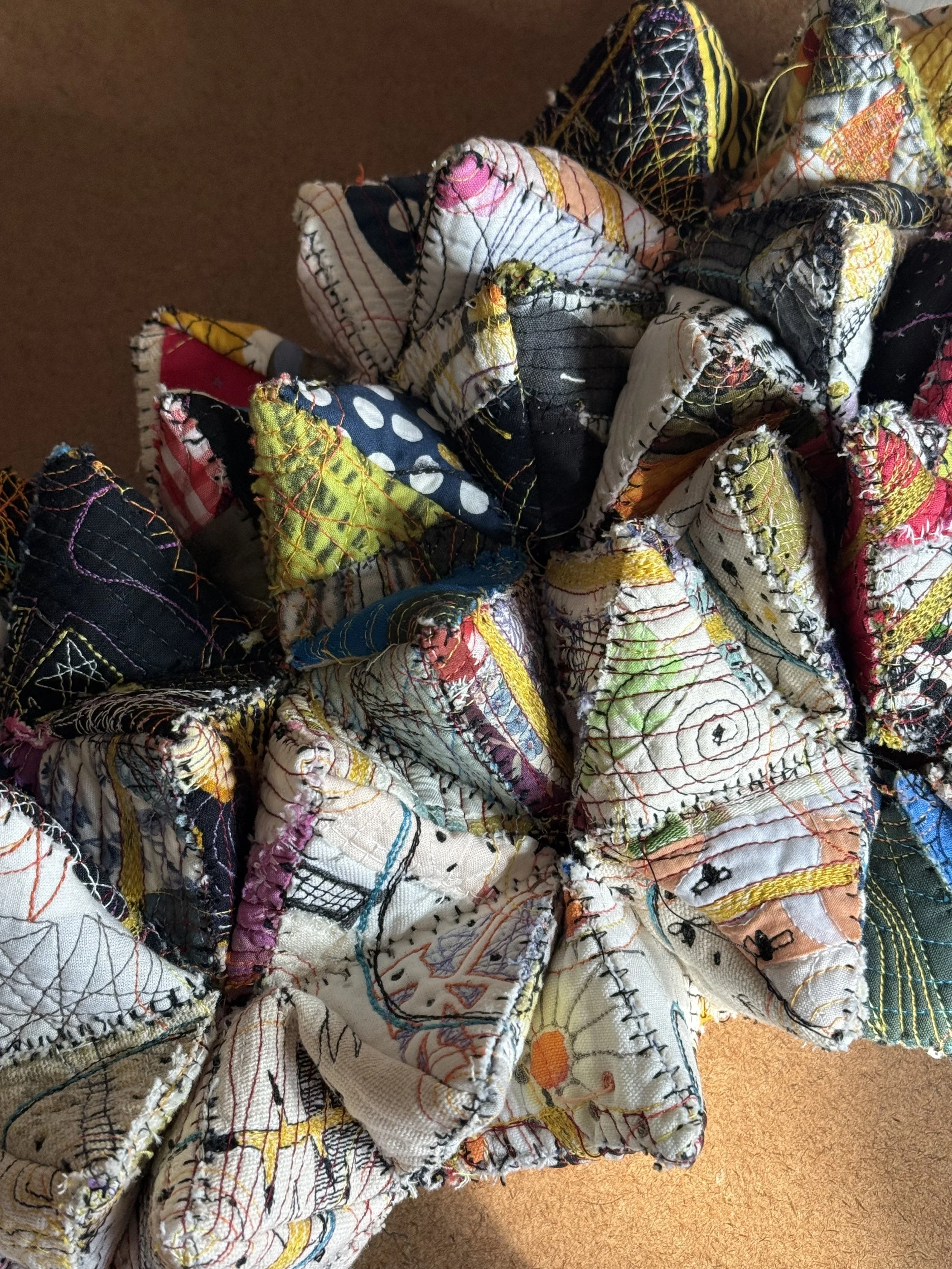The piece I was working on last week transformed before my eyes after several hours of experimental stitching. The cloth is an old circular tablecloth that I dyed with a spray bottle filled with watered down dye. It was going to be an underskirt for my nuclear testing piece that is languishing in the corner of the studio.
I pulled it out of the experiment pile last Friday and folded it in half, then cut it into two wedge pieces so that I could try some stitching ideas I had. The stitching exercise gave me some great textures. It started with random straight lines that went across the piece higgledy piggledy to anchor the cloth.
Then at each new bobbin I changed the color of the thread to add more interest. Eventually a wonky grid emerged. As the grid grew I noticed that at the junctions of the navy blue lines there was a sense of dominance. So I decided to reinforce that by starting a new line of thread (in black) that started at the juncture and traveled on in a wavy line across the piece. Letting the thread ends hang.
As the thread ends started to accumulate I had to figure out how to handle them. Bury them? let them hang? cut them off? Tie them together? I loved the extra texture the thread was giving me but the thread ends were obscuring the texture below so I decided to nail them down with a spiral of stitches and trim them off. It was then that I realized I had created a terrain of sorts with little focus points that could represent targets.
Laying the stitched cloth over the remaining wedge of fabric made me stop in my tracks. Suddenly it all made sense. This piece is about a land ravaged, surrendering to chaos and on the edge. The stitched piece created a shoreline over the second wedge.
The edges are raw. The threads are chaotic.
And now I am hand stitching trails, individuals and groups across the void. Moving them toward the calm and away from the chaos.



































